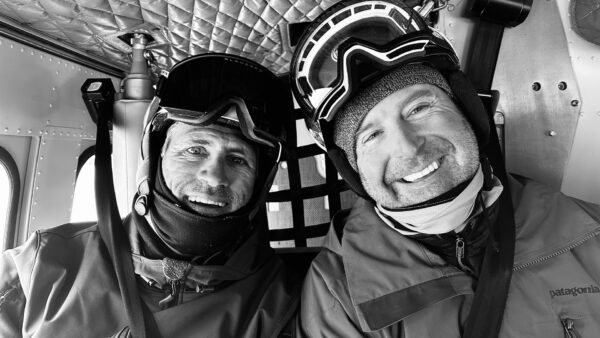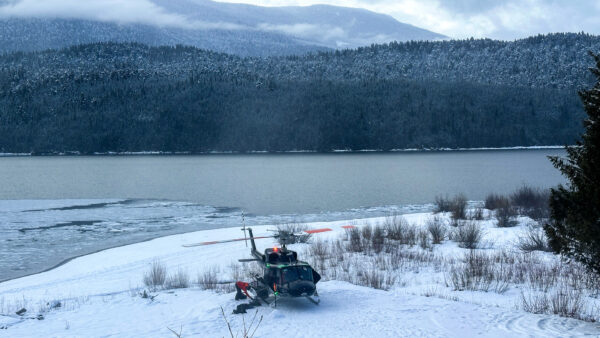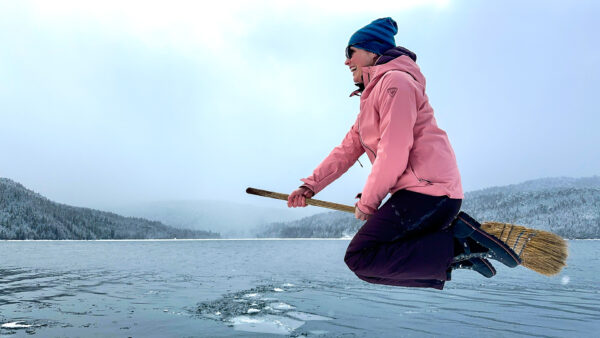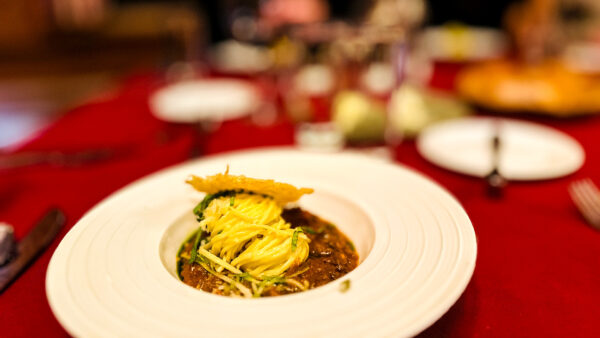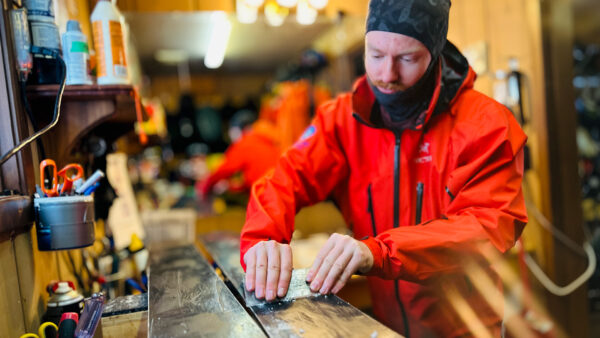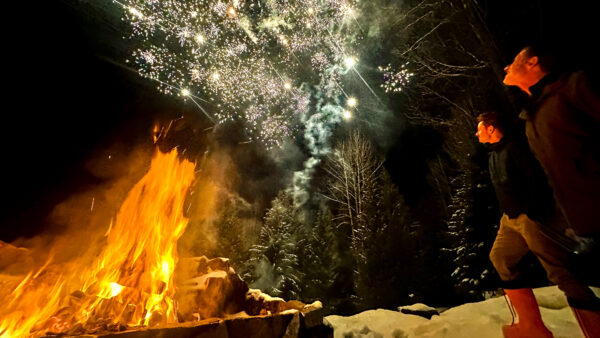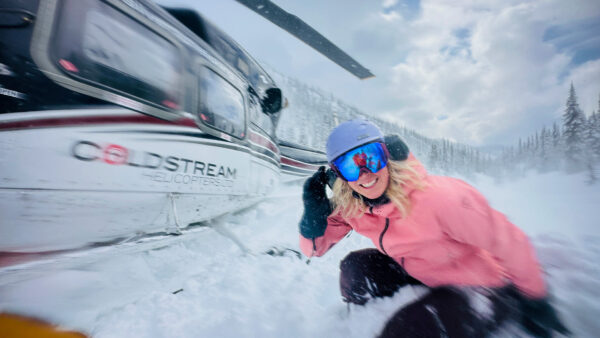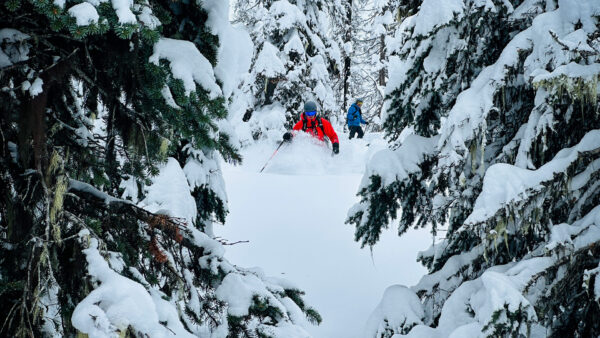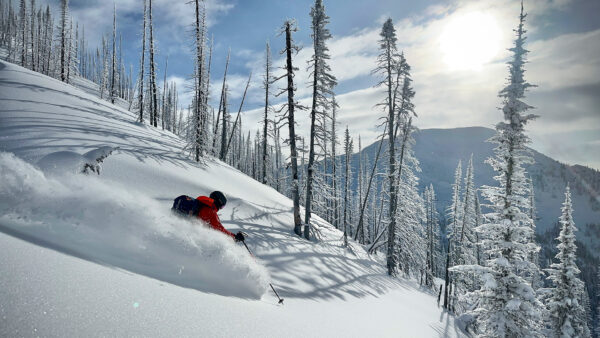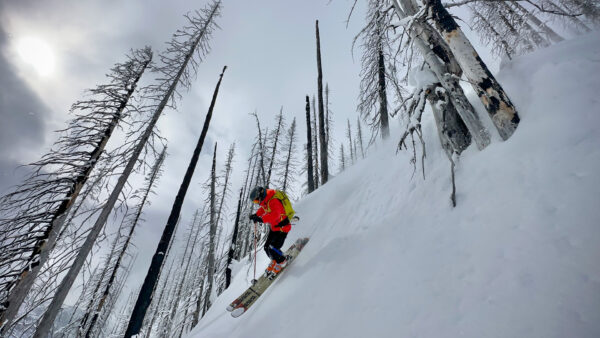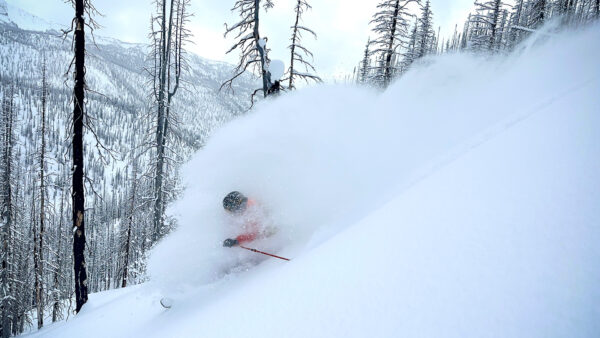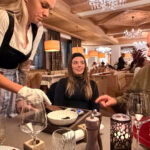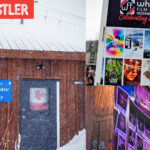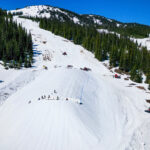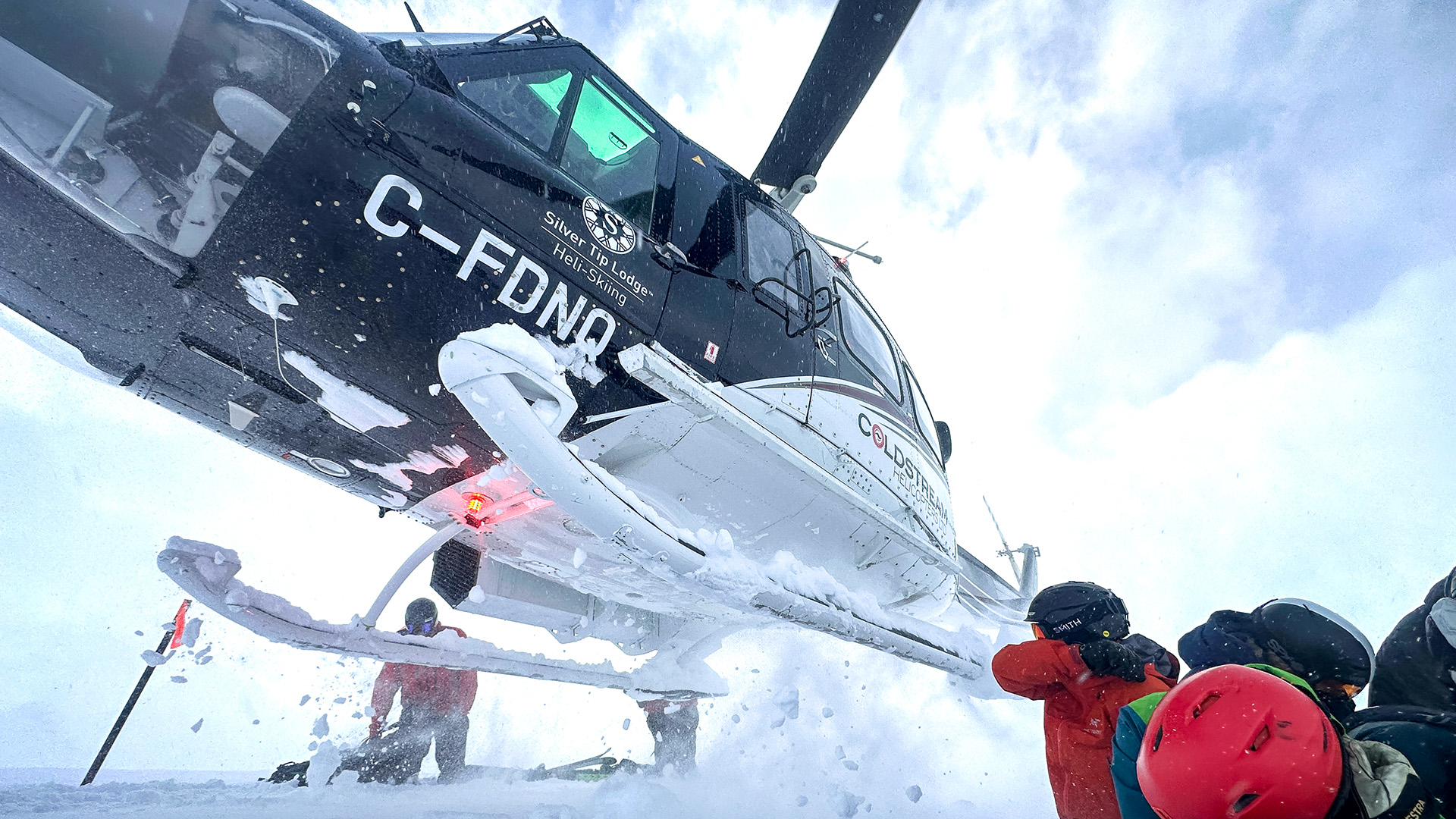
A New Era of Mountain Guiding at Silvertip
Mountain guiding has been around a while: In the earliest days, local inhabitants lead elegant ladies and gentlemen on gentle strolls in alpine meadows, glacier hikes, and highly dangerous quests to climb the highest peaks in the European Alps. Hemp ropes and hobnail boots anyone?
Guiding was a part time profession, bringing extra income to poor farming families. The work was tough and dangerous, the hours long.
Eventually, a few adventurous guides joined the westward movement of Europeans, seeking adventure in new mountains, impelled by curiosity and a desire to explore.
Canadian mountain sports and guiding were born out of this migration. The wilds were explored, peaks climbed, valleys unlocked, and eventually, along came skiing, the wild child of the mountains. Who knew then what future awaited, that the punk offspring of the Alps would grow to become the most respected guides on the planet, known for their skill in skiing, climbing and mountaineering, but also for the softer skills of leadership, safety, and teaching.
Sitting with 41 years young Michael Shynkaryk, an ACMG and CSGA ski guide at world renowned Silvertip Lodge, BC’s most remote heli skiing provider, I asked him how guiding had changed over the years.
“It’s changed a lot, and for the better”, says Michael, sipping on something orange and non alcoholic. “We’re teachers now, as much as guides”.
Michael works as a geological engineer in the summer and used to be a ski instructor, two lines of work which are all about managing risk and reward.
“We start from a point of safety, and work out from there, considering how far we can go before any of the factors that influence decision making cross into the realm of danger; who are your skiers, what do they want from the day, how do past, present and future snow and weather affect what we will do today?” He pauses, looks thoughtful, takes a sip of his eau minerale, and continues, “but that doesn’t mean we don’t make it fun. We do. And it doesn’t mean we won’t accept any risk at all. Of course we do. We couldn’t go into the mountains if we didn’t”.
Silvertip Lodge is tucked deep in British Columbia’s Cariboo range, offering true luxury in a remote setting. Putting a man on the moon was indeed a great achievement, but it pales in comparison to the startling fact that prior to skiing, after rising from one’s comfortable bed and joining a yoga class, one may eat freshly baked croissants dozens of kilometers from the nearest road or habitation while gazing out at Silvertip’s 1,400 square kilometers of skiable tenure.
And 1,400 square kilometers is a lot of skiing. In fact, it’s almost exactly one quarter of the size of Prince Edward Island, or, if you’re European, three times the size of Andorra, a nation known for its large, high quality ski resorts. There are almost 50 countries in the world smaller than Silvertip’s tenure and I believe that in not one single one of them will you find powder or croissants superior to those at Silvertip.
Weather stations dot the tenure, collecting and transmitting data back to the lodge so that the guiding team can make informed decisions about where to ski from day to day. And of course weather stations only speak to us about past and present weather; guides today can also refer to a vast array of highly accurate (or at least more accurate) weather forecasting information. Combine this with knowledge of the group and their mindset and pretty quickly a plan for the day begins to form: What areas are going to offer the best margin of safety, and what sort of terrain do the guests want to ski? The overlap of those two zones, in an unevenly shaped Venn diagram, is where the skiing will happen today.
When I was about 25, I recall climbing on a mountain crag in Scotland, about 4 pitches high, and, as usual in Scotland, windy. A guide and his clients were on a route about 100 meters away, upwind from us. We could hear every word shouted by the guide, who I knew well, to his clients, and those words were not kind:
“Reach up to the right. Not that right. The other ^&%$ing right. What the %$&* is wrong with you? The other %*$#ing right……. %&#$, man. Are you &@%^ing stupid?”
And so it went on, the clients glumly lumbering upward under the weight of gravity, their backpacks, and a crashing torrent of abuse. When they finally, mercifully, reached the top, they untied, threw their rope ends on the ground, handed the guide a little of his own verbal medicine and stomped off, never to return to that guide, probably not to any guide, and possibly not to the mountains at all.
Looking back, and knowing the guide as I did (a nice, kind, and funny man), I wonder what prompted such behavior. Was he driven by a perceived need to be manly and macho? Did he just hate those particular clients? Was he burned out, tired of his job, frustrated at how his passion had turned into his work? The goal was ‘Get from point A to point B, in relative safety. Get home’. There was no joy, no learning. No attempt to offer an experience any more involved than the skin deep adventure of the activity itself. I recall one of the same generation of guides, cut from the same cloth, telling me how the trick to avoiding going to the summit of the Matterhorn was to leave the Hornli hut at a pace which the clients had no hope of maintaining. By the half way point at most, they would be exhausted and beg to go down. The guide would be comfortably tucked up at home by mid afternoon, work mostly avoided, but responsibilities, kind of, met.
Of course the majority of guides did not fit this model. They were focused on safety, achieving goals, and while teaching and creating a collaborative group environment weren’t a big part of anyone’s plan for the day, most guides loved their jobs and loved being out in the mountains with people. The new guiding model takes this template, and builds on it.
Tail guide Austin Goodine watches silently from the edge of the group, visually checking buckles and straps, backpacks, helmets and bindings. Michael runs the group dynamics. Austin knows this and steps back, but is always there, ready to field questions, offer ski tips, respond to a rescue, and make a few turns for a visiting writer’s camera.
“Add to my left”, says Michael, with a chuckle. He has us well trained. We know what he means now. We can tease him as much as he teases us. Like a good ski instructor, he’s no longer apart from the group, but an interactive part of it. Masterfully handled, our group is no longer six people, plus the guide, but seven people, one of whom is the guide.
Sometimes we add to his right (meaning ski to the right of his tracks). Sometimes we add to his left. On occasion, when Michael is feeling capricious, “Add to my……..?” and one of us will cautiously volunteer “….. left?”.
“That’s right. To my left”, Michael will reply, skiing off, with a light touch of the snow, hitting the pillows below us, popping off side hits and gully bankings, inviting us to do the same. He’s one of those skiers that leaves inexplicably shallow tracks behind him, making you wonder, “How did he just do that?”.
Michael carries over from his previous career a playful approach to skiing, a teacher’s approach to group management and the ‘people skills’ that add so much to a group’s day in the mountain. What he does is build a team, without actually saying the overused words ‘team building’.
By inviting us to speak up and be part of the process, as much as Michael shares his energy with us, we share ours with him. Michael brings the hard skills, but he counts on us to bring joy and energy to the day, and he makes it easy for us to do this by creating an open group environment where everyone feels free to voice their thoughts and to laugh at each other, at themselves, and from time to time, at Michael.
We follow Michael, not because he says we should (though he did very clearly say we should) but because we trust him, not only to keep us as safe as we can be in the mountains, but to find the best skiing. He earns and maintains our trust through allowing us a glimpse of his decision making process, even, on occasion, allowing us to share in route choice, within the limits of what’s safe, and with consideration of where our helicopter will be picking up from.
“What do you guys fancy this run?” he asks, clearly hoping we are going to say “Steep, please”.
“Steep, please”, Yana says. Michael looks happy.
“I was hoping you’d say that, Yana.” He looks around the group, “Add to my……?”
“Left?” I say, cautiously, still half expecting to hear “Left?! Are you ^$@*ing stupid?!”
“Yeah. Left. That line over there looks fun today”, He says, with another grin, pushing off into the gentle bowl above a wide open glade leading all the way to valley bottom.
And who wouldn’t smile, deep in the Cariboo mountains, with a couple of croissants in your tummy, 1500 feet of powder below you, 2 guides, 6 happy guests, and a helicopter circling down to the bottom of your run.
Of the many strengths of Silvertip, perhaps its greatest (alongside the food) is the sheer proximity of great skiing to the lodge itself. Three minutes’ flight time from the door bring a guide and their group to terrain that’s skiable in almost any condition, meaning the briefest opening in the weather allows for turns. As a result, there are almost no shut down days here. Essentially, rather than bringing the skiers from the lodge to the skiing, they brought the lodge to the skiing.
How does this impact the life of a guide?
“We live in a state of constant readiness”, grins Michael, casting sideways glances at the window. He might be ready, but I’m not: no way am I leaving this croissant unfinished.
“We get out skiing as soon as weather allows, and work out into the surrounding terrain as the sky opens up”.
Almost magically, the Cariboo are covered in trees which are close enough to provide safety, yet widely enough spaced that sight lines are long, and a skier doesn’t often feel restricted in where and when they can turn. Think Japan, but with Canadian trees and open burnt forest. If there were a deity, and they were a skier, this, no doubt whatsoever, is what they would create. And they’d drop a nice lodge and world class pastry chef right in the middle of it all.
“It’s perfect”, says Michael. “We can get out skiing in tiny weather windows which wouldn’t be long enough elsewhere. I love it here for many reasons, but those especially”.
“What about the croissants?” I ask, munching happily on one, equal to anything in France.
“Yeah. These too.”, says Michael, sputtering crumbs as he laughs.
Michael talks about his values. Joy and security are two of them; balancing the goal of joy with the need to manage the dangers which threaten backcountry skiers. A solid foundation, it seems to me, for a career as a guide.
Standing at the lakeside helipad on our final day, the weather has finally broken. Indicator Hill is clear, the sky a deep blue. We’ve skied every day, lap after excellent lap, waist deep at least, but this morning is going to be different.
No more being the butt of Yana’s jokes during yoga:
“You’re supposed to twisting, Nigel”.
“I’m twisting on the inside, Yana”.
No more croissants, thankfully: For the last two days I’ve been skiing with my waist buckle undone, every 10 turns skipping pole plants to hitch my pants up again. Pillow lines are out of the question. But at least I can think about how much I used to love them, back in the days when I was thin. Last week. Before I came to Silvertip.
The helicopter sweeps around the corner in a blaze of backlit windblown snow, landing inches from us.
Michael and Austin have the skis in the basket in the time is takes us to load ourselves, and within a minute we’re arcing high over the lake, up the valley, and over the heights of the surrounding summits. Hundreds, thousands of summits, ours for the taking.
Michael’s gaze wanders along the horizon. He says something to Austin, who looks and nods and smiles.
This morning is indeed going to be different. Better. Possibly even the best day ever.
FACTS
Silvertip Lodge: silvertipheliskiing.com
How to get there: Fly to Vancouver, join the lodge’s chartered plane to Williams Lake, helicopter in from Williams lake
Cost: Varies throughout season
Inclusions: Flights from Vancouver to Williams Lake, heli transport to lodge, accommodations, all meals, heliski time, guiding, yoga sessions….. and croissants.
Exclusions: Flights to Vancouver, alcoholic drinks.
Need to know: BC’s remotest lodge, bring a book, though you probably won’t read it.
Good to know: Bring a bigger belt.

